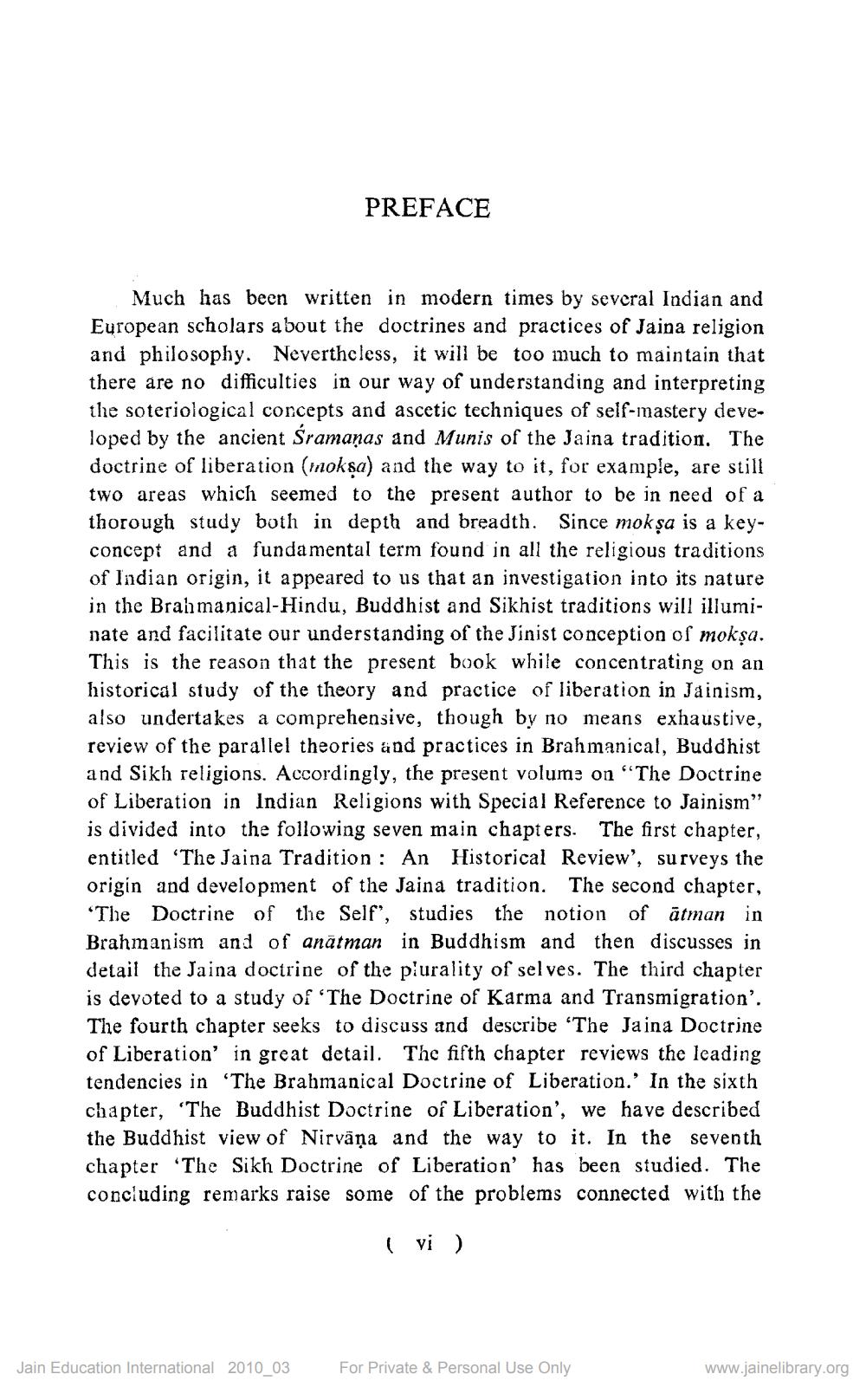Book Title: Doctrine of Liberation in Indian Religion Author(s): Shivkumarmuni Publisher: Munshiram Manoharlal Publisher's Pvt Ltd New Delhi View full book textPage 8
________________ PREFACE Much has been written in modern times by several Indian and European scholars about the doctrines and practices of Jaina religion and philosophy. Nevertheless, it will be too much to maintain that there are no difficulties in our way of understanding and interpreting the soteriological concepts and ascetic techniques of self-mastery developed by the ancient Śramanas and Munis of the Jaina tradition. The doctrine of liberation (mokṣa) and the way to it, for example, are still two areas which seemed to the present author to be in need of a thorough study both in depth and breadth. Since mokşa is a keyconcept and a fundamental term found in all the religious traditions of Indian origin, it appeared to us that an investigation into its nature in the Brahmanical-Hindu, Buddhist and Sikhist traditions will illuminate and facilitate our understanding of the Jinist conception of mokṣa. This is the reason that the present book while concentrating on an historical study of the theory and practice of liberation in Jainism, also undertakes a comprehensive, though by no means exhaustive, review of the parallel theories and practices in Brahmanical, Buddhist and Sikh religions. Accordingly, the present volume on "The Doctrine of Liberation in Indian Religions with Special Reference to Jainism" is divided into the following seven main chapters. The first chapter, entitled 'The Jaina Tradition: An Historical Review', surveys the origin and development of the Jaina tradition. The second chapter, 'The Doctrine of the Self", studies the notion of atman in Brahmanism and of anatman in Buddhism and then discusses in detail the Jaina doctrine of the plurality of selves. The third chapter is devoted to a study of 'The Doctrine of Karma and Transmigration'. The fourth chapter seeks to discuss and describe "The Jaina Doctrine of Liberation' in great detail. The fifth chapter reviews the leading tendencies in 'The Brahmanical Doctrine of Liberation.' In the sixth chapter, 'The Buddhist Doctrine of Liberation', we have described the Buddhist view of Nirvana and the way to it. In the seventh chapter 'The Sikh Doctrine of Liberation' has been studied. The concluding remarks raise some of the problems connected with the (vi) Jain Education International 2010_03 For Private & Personal Use Only www.jainelibrary.orgPage Navigation
1 ... 6 7 8 9 10 11 12 13 14 15 16 17 18 19 20 21 22 23 24 25 26 27 28 29 30 31 32 33 34 35 36 37 38 39 40 41 42 43 44 45 46 47 48 49 50 51 52 53 54 55 56 57 58 59 60 61 62 63 64 65 66 67 68 69 70 71 72 73 74 75 76 77 78 79 80 81 82 ... 240
